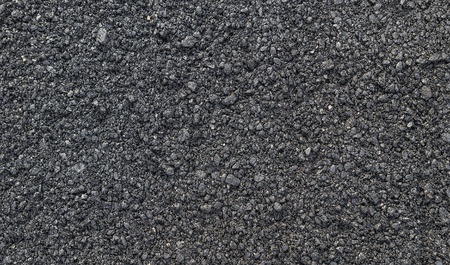Experience the Difference: Hot Mix Asphalt Paving for Regrading Projects
Experience the Difference: Hot Mix Asphalt Paving for Regrading Projects
Blog Article
Unlocking the Secrets of Hot Mix Asphalt Innovation
Discovering the depths of hot mix asphalt technology uncovers a globe where careful processes and specific formulas assemble to shape our roadways and facilities. The fusion of binders, fillers, and accumulations isn't simply a building task yet a tactical orchestration of durability and performance.
Significance of Warm Mix Asphalt
Warm Mix Asphalt plays an essential function in modern-day framework development due to its resilience and cost-effectiveness. As the most frequently made use of leading product for roadways, freeways, and parking great deals, Hot Mix Asphalt provides a variety of advantages that contribute to its value in building tasks.
The longevity of Hot Mix Asphalt comes from its structure, that includes aggregates, binder, and filler materials that are thoroughly selected and mixed to meet particular efficiency needs. This exact mix leads to a flexible and strong sidewalk that can withstand regular use without significant deterioration. Warm Mix Asphalt is 100% recyclable, more enhancing its sustainability and environmental benefits. In general, the importance of Hot Mix Asphalt in infrastructure development can not be underrated, as it remains to be a foundation of modern construction techniques.
Elements of Asphalt Mixes
The structure of asphalt blends consists of thoroughly chosen accumulations, binder, and filler materials that are important for attaining specific performance demands. Aggregates are the main part of asphalt blends, providing stamina and security. The binder, typically bitumen or asphalt cement, holds the accumulations together and supplies adaptability and durability to the mix.
The combination and proportion of these elements play a significant function in establishing the top quality and performance of the asphalt mix. Engineers very carefully create the mix to fulfill certain needs, taking into consideration elements like website traffic quantity, environment problems, and sidewalk life expectancy. Appropriate option and balancing of aggregates, binder, and fillers are important for creating durable, long-lasting asphalt pavements.
Mixing and Manufacturing Strategies
:max_bytes(150000):strip_icc()/asphalt-worker-134249388-58cdf96f5f9b581d723f2f33.jpg)
Once the aggregates are selected, the binder, typically asphalt concrete, is included to bind the products with each other. The binder's top quality and amount dramatically influence the mix's resistance, toughness, and adaptability to ecological elements. Additionally, fillers like hydrated lime or Rose city cement may be integrated to enhance particular characteristics of the asphalt mix, such as its workability or dampness resistance.
Throughout manufacturing, the aggregates and binder are heated up, generally between 250-325 ° F(121-163 ° C ), to promote blending and ensure appropriate finish of the aggregates. The mixing process must be complete to achieve a homogeneous combination that advertises the preferred performance characteristics of the asphalt. Numerous strategies, such as batch mixing or drum blending, are utilized to achieve regular and high-grade asphalt mixes for building tasks.
Variables Impacting Asphalt Performance
Aspects influencing asphalt efficiency include a variety of variables that influence the longevity, durability, and overall high quality of asphalt pavements. One crucial element is the top quality of materials made use of in the asphalt mix. The type and resource of aggregates, the binder quality, and the ingredients all play a significant duty in identifying the efficiency of the asphalt pavement. The rank of accumulations is vital as it influences the mix's resistance, workability, and stability to rutting and splitting.

Environmental problems also affect asphalt efficiency. Temperature news variations, wetness seepage, and web traffic lots can all affect the architectural integrity of the sidewalk. Design factors to consider, such as pavement thickness and water drainage, are necessary in guaranteeing the lasting performance of the asphalt sidewalk. By carefully thinking about these professionals, aspects and designers can maximize asphalt performance and enhance the service life of sidewalks.
Sustainable Practices in Asphalt Innovation

WMA permits for the production and positioning of asphalt mixes at reduced temperatures contrasted to traditional hot-mix asphalt, resulting in minimized energy intake and greenhouse gas emissions. The use of permeable asphalt mixes can assist mitigate stormwater overflow issues by enabling water to penetrate through the pavement and into the ground, promoting all-natural water filtration and charge procedures.
Conclusion
Finally, hot mix asphalt technology plays a critical role in modern facilities development because of its durability and cost-effectiveness. By very carefully stabilizing parts, using correct blending techniques, and considering various elements, engineers can produce premium asphalt blends that hold up against rush hour loads and harsh climate condition. Embracing sustainable practices, such as making use of recycled materials and warm-mix technologies, further enhances the ecological kindness of asphalt innovation.
Blending and production techniques in hot mix asphalt modern technology entail the exact mix and handling of accumulations, binder, and fillers to produce a resilient and high-performance asphalt mix.Factors affecting asphalt efficiency encompass a range of variables that affect the toughness, longevity, and total quality of asphalt sidewalks. Lasting methods in asphalt More Info innovation encompass different campaigns intended at lowering the ecological impact of asphalt manufacturing and paving processes. By incorporating redeemed asphalt sidewalk (RAP) and recycled asphalt shingles (RAS) right into new asphalt mixes, the market can substantially reduce the intake of raw materials and power, while likewise lowering garbage dump waste.
WMA allows for the manufacturing and placement of asphalt blends at reduced temperatures contrasted to traditional hot-mix asphalt, resulting in lowered energy usage and greenhouse gas emissions.
Report this page